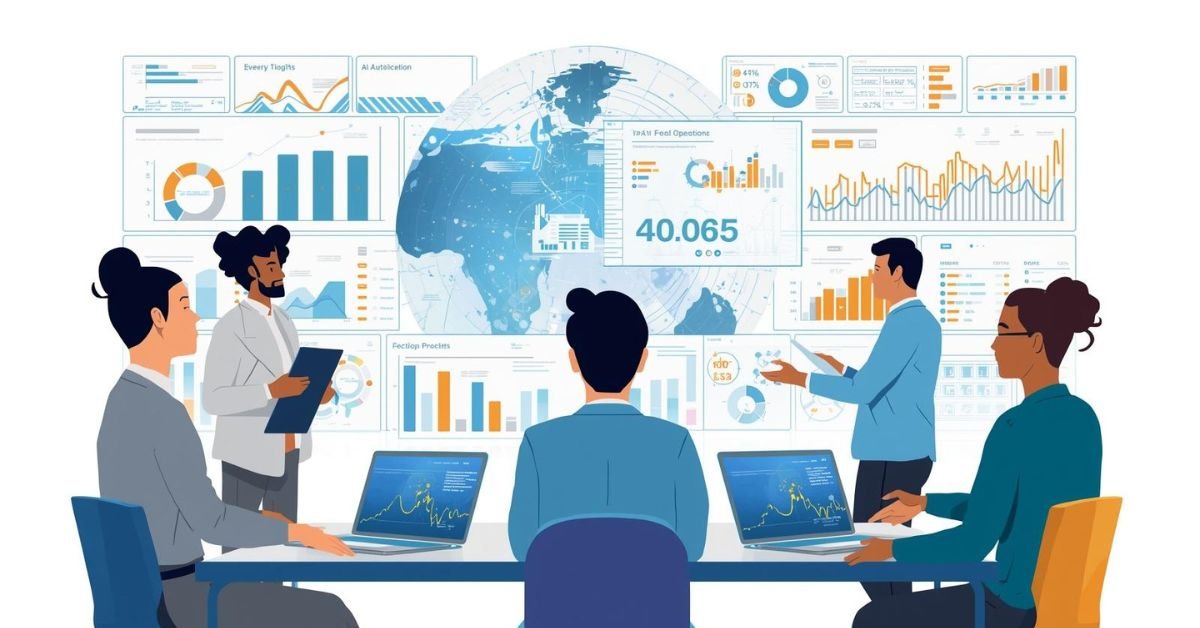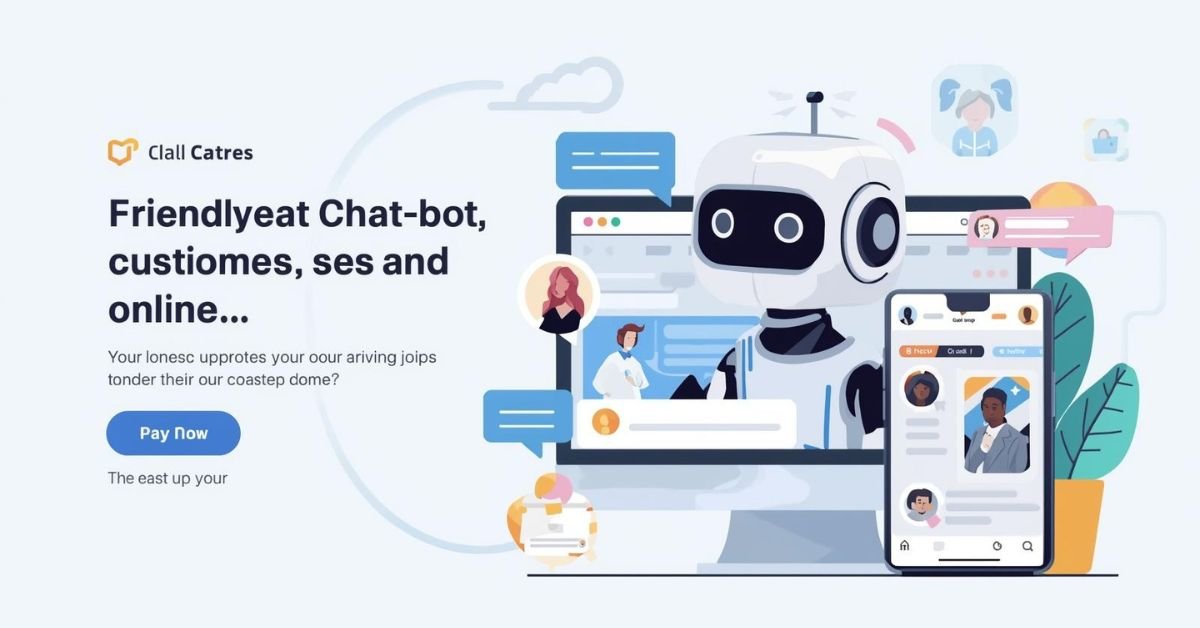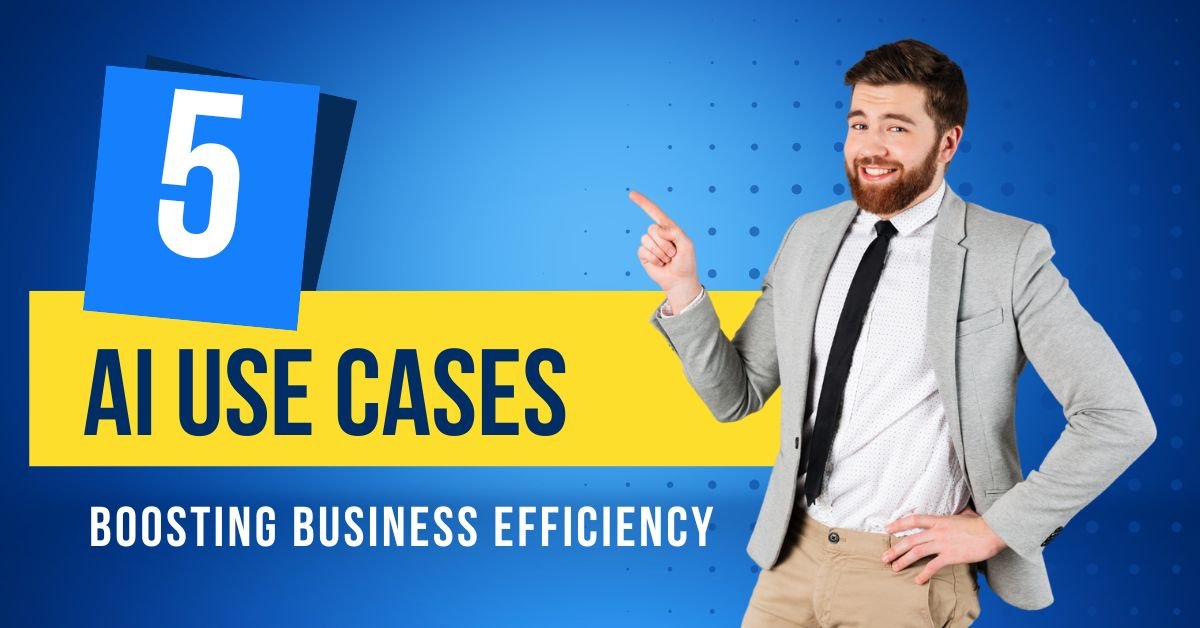Today, businesses are always under pressure to accomplish more with less. Teams have to deal with higher client demands, more competition, and smaller funds. That’s when AI, or artificial intelligence, comes in. In reality, AI use cases that improve business efficiency are no longer just ideas for the future; they are real, quantifiable, and already changing whole sectors. To see how companies are applying AI in different areas of business, explore our guide on AI for businesses.
I’ve seen organizations use AI not simply to save money but also to find new ways to make money. AI is helping teams focus on what truly matters: creating value. It does this by automating repetitive tasks and forecasting demand.
This article will show you five real-life examples of AI in action. Each example illustrates how a company identified a problem, applied AI techniques to address it, and achieved quantifiable results. As we go, I’ll offer ideas, surprises, and suggestions that you may use in your own work.

AI is changing the way businesses work in a big way. AI use cases make it easier to make decisions and speed up work by automating operations and creating predictive dashboards. Real-time insights shown on easy-to-use interfaces make it easier for teams to work together. This helps organizations grow their operations without making many mistakes.
1. AI Use Cases: Chatbots Transforming Customer Service

AI use cases, like AI-powered chatbots, improve customer service by giving quick answers on a variety of platforms. They can handle frequently asked questions, escalate more complex queries, and ensure customers feel supported at all times. Chatbots use natural language processing to have conversations that mimic real human interactions, increasing customer satisfaction. Businesses benefit from lower operational costs and faster response times.
A store had too many customers to handle. Their staff of 20 agents had thousands of questions per day concerning orders, refunds, and product information. Customers were getting more and more frustrated since response times were longer than 24 hours.
The answer is conversational AI.
One of the notable AI use cases is a chatbot that converses with people using natural language processing (NLP). The chatbot learns from past support queries and is programmed to answer the most common inquiries. By integrating with their CRM, the bot can access real-time information about orders and products.
A Step-by-Step Plan
- Find the questions that people ask the most (regarding shipping, refunds, and tracking orders).
- Teach the chatbot using information from previous customer service calls.
- Add WhatsApp and Messenger after the webpage.
- Make the tone and flow better based on what consumers say.
Results
- It used to take 24 hours to react, but now it takes less than 2 minutes.
- There were 45% fewer tickets in line.
- Customer satisfaction scores rose by 30%.
- Estimated savings: 20% less than hiring more agents.
Thoughts
- This is another practical AI use case, where customers were comfortable chatting with a computer as long as they received quick, accurate answers. For more complex situations, a smooth handoff to human agents was essential.
- A key AI use case is starting with your top three customer queries and then adding additional ones. Regular training and feedback help keep the chatbot effective and useful.
2. AI Use Cases: Predictive Maintenance in Manufacturing
A medium-sized manufacturing business had to cope with costly downtime because its machinery went down. Reactive maintenance cost more and fouled up the manufacturing schedule. The leaders aimed to devise a solution that would function proactively.
The answer is predictive analytics enabled by AI.
A practical AI use case involved building a system that used data from IoT sensors on machines. The system applied machine learning to detect early signs of equipment failure.
A Step-by-Step Plan
- Put sensors in place to record data on vibration, temperature, and use.
- Send data to an AI platform to find unusual patterns.
- Use old maintenance reports to train the model.
- Engineers receive real-time warnings when dangers arise.
Results
- There was a reduction of 40% in unplanned downtime.
- Costs for maintenance went down by 25%.
- The manufacturing process became 18% more efficient.
Thoughts
- One surprising insight came from an AI use case showing that small environmental changes, like plant temperature, could significantly impact machine health. AI helped uncover these hidden risks.
- If your firm depends on machines, you should use predictive maintenance. The money spent on sensors up front pays off soon by cutting down on downtime.
3. AI in Supply Chain Demand Forecasting: The Problem and Background
An important AI use case for consumer goods companies is demand forecasting. Firms often struggle with stockouts during busy periods and excess inventory during slow periods due to forecasting errors, which can harm both customer trust and revenue.
The answer is to use machine learning to make predictions.
The business used an AI technology to make predictions that took into account past sales, seasonal changes, sales, and other factors like the weather and economic indicators.
A Step-by-Step Plan
- Get sales statistics from the past and info about the outside market.
- Teach machine learning models to find patterns.
- Run simulations of different situations, such as holiday surges and severe weather.
- Introduce changes to your production and inventory strategies as needed.
Results
- The accuracy of the forecasts went up by 35%.
- There were 28% fewer stockouts.
- The amount of extra inventory went down by 22%.
- Customers were happier since they could always find the products they needed.
Thoughts
- Another notable AI use case revealed that local weather significantly affects consumer purchasing behavior. For example, sales of cold drinks surged during sudden heat waves.
- You should use data from outside sources in your projections. AI does well when it finds connections that people might miss.
4. AI Use Cases in Financial Fraud Detection

A key AI use case is turning data into actionable insights. With predictive analytics and machine learning models, companies can identify patterns, forecast demand, and optimize resource use. Studies from McKinsey & Company, show that AI adoption in enterprises can increase productivity by up to 40%.
A firm that processes digital payments saw an increase in fraudulent transactions. The teams who did manual reviews couldn’t keep up with the number of transactions. Implementing an AI use case for fraud detection helped the company identify suspicious activity in real time. Among other AI use cases, automated transaction monitoring ensures faster responses, reducing the risk of losing money and customer confidence.
AI for real-time fraud detection is the answer.
They set up an AI use case that monitored transaction trends in real time. It used machine learning to detect unusual behavior and stop it immediately.
A Step-by-Step Method
- Get statistics about past transactions and fraud.
- Teach AI models to find strange trends in location, frequency, and amount.
- Use real-time monitoring on all transaction channels.
- Keep improving depending on new ways that fraudsters use.
Results
- Losses from fraud went down by half in six months.
- There were fewer false positives, which made the client experience better.
- The amount of work the fraud review team had to do went down by 40%.
Thoughts
- AI found new ways to commit fraud, such as doing a lot of low-value transactions to get around limits. Rule-based systems didn’t find these before.
- What you should learn: AI that finds fraud isn’t just for banks. Anomaly detection models may help any firm that takes payments.
5. AI Use Cases in Personalized Marketing
An effective AI use case in e-commerce is smarter marketing. Among these AI use cases, generic email blasts often fail to engage customers. By using AI, brands can better target the right audience and send the right message at the right time.
The answer is AI-driven personalization.
The business deployed an AI marketing platform that looked at data on browsing, buying, and engaging with customers to provide tailored product suggestions and targeted ads.
Methodical Approach
- Get statistics on how customers engage with your website, email, and social media.
- Dynamically group users depending on their choices and actions.
- Give individualized suggestions based on AI in real time.
- Use A/B tests to test and improve your messaging.
Results
- The number of people who opened emails went up by 45%.
- The rates of those who clicked on links doubled.
- There was a 32% increase in conversion rates.
- In one year, the worth of a customer over their lifetime rose by 20%.
Understanding
- Another impactful AI use case identified “silent browsers” -users who rarely made purchases. When targeted with personalized offers, these customers engaged more, opening up a new revenue stream.
- A powerful AI use case goes beyond simple product recommendations. AI can uncover hidden customer segments and create marketing campaigns that truly resonate with them.
Lessons learned and suggestions for the future
These five AI use cases that improve corporate productivity all have one thing in common: AI isn’t about replacing humans; it’s about giving them more power. Among these AI use cases, AI lets teams focus on more important work by cutting down on repetitive chores, anticipating problems, or customizing consumer experiences.
Here are some useful tips for your projects:
- Begin with a tiny amount and grow. Choose one place where it’s evident that things aren’t working right.
- Find out how it affects things. Keep an eye on key performance indicators (KPIs) like cost reductions, response times, or revenue growth.
- Get your teams involved. Adoption works best when workers feel like they are being supported, not replaced.
- Accept that you will always be learning. AI models get better as they get new data and feedback.
- Don’t think about automation; think about working together. AI works best when it helps people do what they do well.
Take a moment to think about where in your business inefficiencies are wasting time or money. Those are usually the greatest spots to start exploring AI use cases. You can find more tips and real-world examples on how to implement AI effectively on our website
The businesses I talked about didn’t change overnight. They began with little steps, kept track of their progress, and grew. You can too. Exploring the right AI use cases is no longer just a test; it’s a proven way to make businesses run more smoothly.
Disclaimer: Images used in this blog are AI-generated illustrations created for representational purposes only. They do not depict real people, businesses, or actual data

Hi, I’m Amarender Akupathni — founder of Amrtech Insights and a tech enthusiast passionate about AI and innovation. With 10+ years in science and R&D, I simplify complex technologies to help others stay ahead in the digital era.



